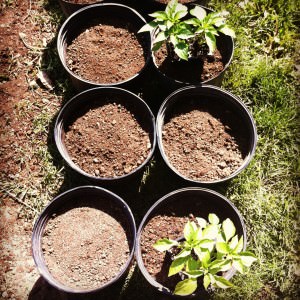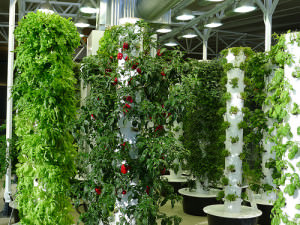The Rise of Urban Farming in North America
A look at potential positive affects of North America’s transition from Rural to Urban farming.
By: Spencer Emmerson, Junior Staff Writer

Image courtesy of Kayla-Jane Barrie
As I drive myself from point A to B, a significant question has grown where endless fields once resided: are we seeing the end of rural farming culture?
I fondly remember waking up early on weekend mornings in order to beat the traffic out of the city, our final destination a chalet or cottage way out in the country. Between point A and B resided many a small town, populated with what seemed like farm after farm and field upon endless field. I remember staring at the giant tractors taking up our driving lane and my Dad impatiently trying to pass them.
However, as I grew older and each trip came and went, significant changes appeared before my eyes. Those once never-ending fields seemed to in fact end. The giant tractors didn’t look so immense as they sat on the front lawn of each and every farm: FOR SALE – see owner for details.
Just as skyscrapers are testing the limits of how high our cities can grow, our urban environments are expanding outwards, resulting in the manipulation of rural areas.
Elizabeth Mylott, author of an essay concerning urban-rural connections, says, “Expansion of urban areas and large-lot development (greater than one acre) in rural areas are reshaping urban and rural areas.”
To travel down a stretch of highway from Toronto to Guelph – roughly 100 km of highway – an onlooker can see the urban and large-lot developments that Mylott is referring to. The distinction between smaller farming communities and urban areas is becoming more difficult to see because these areas – like Guelph and Milton – are becoming more city-like by the year.
Think of it as a fill-in-the-blank problem in which all of the blanks are subsequently filled by the term ‘urban development.’ This kind of development has the potential to threaten agriculture, an idea that concerns Mylott.
The connection between urban development and agriculture
“The growth of urban areas threatens agricultural production,” she says. “As development spreads, it competes with agriculture for land.”
Stats Canada supports this trend of urban development competing with agricultural communities, as there was a 6% decrease in farming communities’ population in Canada over a five year period from 2001 to 2006. These stats could suggest that farmers are beginning to move away from their past lifestyles as farmers to find new ways of making a living within the ever-expanding urban environment.
[pullquote]A project such as this community farm will give the youth of this community as sense of ownership that could potential inspire them to dream big and understand what can come from hard work.[/pullquote]
As fewer people make their living through agriculture the current discourse has turned towards the future of farming. Unfortunately this current discourse places rural and urban environments on opposites sides of the spectrum, with rural areas being the sole place for farming and urban being incapable of sustaining agriculture. This is simply not the case, and currently there are several projects underway in several Canadian and American urban environments that demonstrate farming is far from extinct.
In Brooklyn, NY, a recently hurricane-ravaged suburb is looking to use a 1-acre farm to create a sense of community and responsibility within their youth population. This particular section of Brooklyn is known as the Red Hook Houses, and represents the second-largest public housing community in the city.
The farm will offer jobs to 34 teens in the area with the goal of getting “kids off the streets and into the fields, with the added benefit of eating better at home,” says Crain’s New York.
Kristin Morse, from the Center for Economic Opportunity, explains: “The program tackles two of the Bloomberg administration’s main initiatives – one is food anti-obesity issues and the other is anti-poverty.
This isn’t just a farm, but a job for these young people.”
[pullquote]Vertical farming helps protect crops by housing them in an indoor environment, protecting them from the negative effects of nature while still continuing to reap its benefits.[/pullquote]
A project such as this community farm will give the youth of this community as sense of ownership that could potential inspire them to dream big and understand what can come from hard work. The New York City housing authority is expected to monitor the project, and hopes to expand the project to four other housing communities within the city.
Vertical farming and its growing impact
Another project that is bringing farming into the urban fold is called Vertical Farming, and there are a few examples right in our own backyard.
Dr. Dickson Despommier has been attempting to answer the question of how we are to feed our growing population during a time period in which urban ecosystems are taking over rural farmland. It is believed that over 80% of farmable land is already in use, and that the remaining 20% with not adequately feed our growing population.
This concept of indoor farming has been around for some time, but on a much smaller scale. However, with demand increasing for food, the need to scale up the production is upon us.
“The biggest social benefit is that everyone gets fed,” says Despommier. “All the water is recycled, all the nutrients are recycled. All that leaves the building is the produce.”
Natural events in our environments, such as the flooding currently going on in Western Canada, represent just how fast a good crop can be taken away from us. Vertical farming helps protect crops by housing them in an indoor environment, protecting them from the negative effects of nature while still continuing to reap its benefits.
Alterrus System, a Vancouver-based company, became the first North American Company to implement the vertical-farming technology when they redesigned the top floors of a Vancouver parking lot.

Image courtesy of chipmunk_1 via Flickr
“The VertiCrop technology represents a radical shift in sustainable food production,” said Christopher Ng, Alterrus CEO. “Current food-production methods are ineffective in dealing with the challenges of growing populations and decreasing amounts of farmland. VertiCrop’s high-density urban farming is an effective way to grow nutritious food using fewer land and water resources than traditional field-farming methods.”
Perhaps it isn’t so much that North American agriculture is dying out, but more so that it is changing, much like it has in the past. Innovation such as steam power changed the ways farmlands were cropped. As these examples show, the end of rural farming should not be feared, but embraced.
Spencer Emmerson is a freelance writer based in Toronto, Ontario. In October of 2012, he obtained his Honours degree in English from the University of Guelph. To learn more, please view his twitter account @TheSpinner24.
Source
Image courtesy of MMW Horticulture Group via Flickr
Image courtesy of chipmunk_1 via Flickr
Urban-Rural Connections: A Review of the Literature by Elizabeth Mylott
Vertical Farming
Stats Canada
The Daily Mail: The Plant Skyscrapers
North America’s First Vertical Urban Farm is Being Built in Canada
Brooklyn’s largest public housing development gets urban farm
Red Hook Houses to grow jobs, produce






























Share the post "The Rise of Urban Farming in North America"